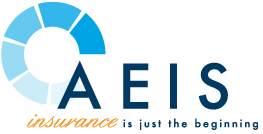As a business owner, selecting a health plan can be difficult. How much should the in-network deductible be? In California and across the country, what plans are businesses in my industry choosing for their employee benefits? How much are other businesses spending per employee? Luckily, United Benefit Advisors (UBA) has gone to great lengths to provide answers to those questions to ensure businesses are making informed health care decisions.
UBA is one of the two largest employee benefit organizations in the United States. Their survey, which is nearly three times larger than the next two largest health plan benchmarking surveys combined, reaches a broad range of employers across the nation. In 2020, UBA surveyed 11,778 employers regarding their health plans; 659 of those employers, encompassing nearly 30,000 employees, are based in California. Below are some of the most significant findings from this survey.
#1 – The top plan in California is an HMO/EPO plan.
Employers and employees are shown to prefer health maintenance organization (HMO)/exclusive provider organization (EPO) plans. In the Golden State, HMO/EPO plans comprise 52.4% of health plans. Preferred provider organization (PPO)/point of service (POS) plans account for 41.74% of plans while health savings accounts (HSAs) cover 5.8% of plans.
#2 – Both small and large groups tend to favor HMO/EPO plans.
51.6% of small groups (1 – 99 employees) choose HMO/EPO plans while 43.6% select PPO/POS plans and 4.8% opt for HSAs. Similarly, 55.8% of large groups (100+ employees) choose HMO/EPO plans while 33.0% select PPO/POS plans and 11.2% opt for HSAs.
#3 – There is a notable difference in plan preferences between Northern and Southern California.
Northern California is mostly PPO territory for non-Kaiser groups while Southern California is largely HMO focused.
#4 – The top four industries in California are Professional/Scientific/Technology Services, Manufacturing, Health Care/Social Assistance, and Wholesale/Retail.
Of these industries, HMO/EPO plans are quite popular amongst manufacturing businesses; they comprise of 60.8% of health plans within that field. In regards to the other top three industries, they tend to more equally favor HMO/EPO and PPO/POS plans.
#5 – The Manufacturing Industry has the highest total average cost per employee across all plan types.
Manufacturing, on average, spends between $10,343 (HMO/EPO) and $16,338 (PPO/POS) per employee. Professional/Scientific/Technology Services spends between $10,370 (HMO/EPO) and $15,200 (HSA). Wholesale/Retail spends between $8,721 (HMO/EPO) and $14,157 (PPO/POS). Health Care/Social Assistance spends between $7,822 (HSA) and $11,612 (PPO/POS). Besides Health Care/Social Assistance, the other three industries fall above or within the state average. Across all California employers, businesses tend to spend an average of $9,345 (HMO/EPO), $12,220 (HSA), or $14,532 (PPO/POS) per employee.
#6 – California business owners make a larger employer contribution than the national average.
Employers in California tend to pay for 71% of the cost of the health plan with the employee paying for the remaining 29%. In the United States, the average employer pays for 68% and the employee pays for 32% of the plan.
#7 – While PPO/POS plans and HSA plans are on the expensive side in California, HMO/EPO plans are below the national average.
For PPO/POS plans, the average cost per employee per year is $11,249 nationally and $14,532 in California. For HSA plans, the average cost per employee per year is $10,089 nationally and $12,220 in California. For HMO/EPO plans, the average cost per employee per year is $10,040 nationally and $9,345 in California.
#8 – In California, the median in-network deductible for H.S.A. plans was the most expensive while the median in-network deductible for PPO/POS plans was the most inexpensive.
The median in-network HSA deductible was $3,000 for singles and $6,000 for families. The median in-network HMO/EPO deductible was $1,650 for singles and $3,300 for families. The median in-network PPO/POS deductible was $750 for singles and $2,000 for families.
While the UBA Survey can be tremendously helpful in understanding trends in California and across the United States, at the end of the day, your business has unique needs regarding health insurance. Talk to our Principal Ron Bland to understand which insurance plan fits best with your company. Our team, made of expert advisors, can also assist you in acquiring a robust and comprehensive benefits package. You can reach us at Ron@AEISAdvisors.com or 650.348.6234 x12.
Disclaimer: Any information related to compliance or other subject matters in this blog is intended to be informational and does not constitute legal advice regarding any specific situation. The content of this blog is based on the most up-to-date information that was available on the date it was published and could be subject to change. Should you require further assistance or legal advice, please consult a licensed attorney.



